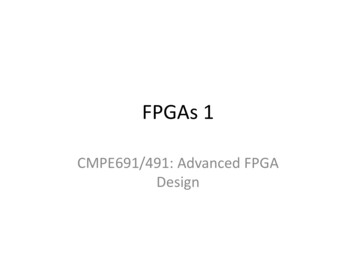![[Title To Come] DSP Dynamic Asset Allocation Fund](/img/24/dsp-dynamic-asset-allocation-fund.jpg)
Transcription
#INVESTFORGOODDSP Dynamic[Titleto come]Asset Allocation Fund[Sub-Title to come] People Processes Performance December 2020DateStrictly for Intended Recipients Only* DSP India Fund is the Company incorporated in Mauritius, under which ILSF is the corresponding share class
DSP Dynamic Asset Allocation Fund (DAAF) – A Brief OverviewWHATWHYWHOis DAAF ?to invest in DAAF ?should invest in DAAF ? Fund that DYNAMICALLYMANAGES ALLOCATIONbetween equity and debt DYNAMIC ASSET ALLOCATIONReduces the need for investor totime the market NEW INVESTORSA way to gain exposure toequity markets withpotentially lower volatility Fund determine coreequity allocation byassessing MARKETVALUATIONS CAPITAL PRESERVATIONPotential to preserve capitalduring market correction INTERMEDIATE INVESTORSAn automated* solution forinvestments especially whenmarkets are confusing VOLATILITY REDUCTIONCan control portfolio levelvolatility thereby enablingsmoother investor experience EXPERIENCED INVESTORSCan be suitable forcombining with otherexposures in an assetallocation model Add on to core equityallocation usingTECHNICAL SIGNALS toparticipate in bull marketFund that allocates between Equity and Debt based on attractiveness of equity markets,which can be suitable for all types of investorsSource: Internal. * The construct of DSP Dynamic Asset Allocation Fund (‘scheme’) is to dynamically manage the asset allocation of the Scheme based on a model’. For scheme specificrisk2factors, asset allocation and more details, please read the SID of the scheme available on www.invest.dspim.com.
DecodingAssetAllocationmodel[Title to come](How equity allocation is determined?)[Sub-Title to come]DateStrictly for Intended Recipients Only* DSP India Fund is the Company incorporated in Mauritius, under which ILSF is the corresponding share class
DAAF model – Process Overview1. FUNDAMENTAL FACTOR2. TECHNICAL SIGNALSDetermine CORE equity allocationbased on market valuationADD ON to core equity allocation toparticipate in bull marketDAAF ModelDAILY EQUITY ALLOCATION3. FINAL EQUITY ALLOCATIONSmoothening the signals to avoidfluctuations in daily equity allocationMINIMUMEQUITY ALLOCATION20%90%MAXIMUMEQUITY ALLOCATIONStructured mechanism of managing equity risk through asset allocationSource: Internal4
1. Fundamental factor determining CORE equity allocationWhat fundamental factors are used to determine valuationattractiveness of Equity Market? Why P/E & P/B ? DAAF Model uses Price to earnings (P/E) & Price to Book(P/B) of Nifty 50 to determine valuation attractivenessP/E & P/B ratios provides comprehensive assessmentof the valuation of companies in the Nifty 50 indexTrends in P/E & P/ B ratios for the Nifty 5045740635P/E level254203152105P/B level530Price/Earnings Ratio (LHS)Price/Book Ratio E /EARNINGS (P/E)RATIO OF THENIFTY 50PRICE / BOOK(P/B) RATIO OFTHE NIFTY 50A measure of theEARNINGSPOWER ofcompanies in theNifty 50A measure of theNET ASSET VALUEof companies inthe Nifty 50Source: NSE Indices, Internal. Data as of 31 Dec 2020. Indices are unmanaged and used for illustrative purposes onlyand are not intended to be indicative of any fund’s performance. It is not possible to invest directly in an index.Links P&L statement with balance sheetValuation of the Nifty 50 index is a proxy for valuation attractiveness of the equity market5
1. Fundamental factor determining CORE equity allocationHow P/E & P/B of Nifty 50 used in the model? Model assigns percentile score to the current P/E & P/B ratios of Nifty 50 relative to its history on daily basis.Percentile score denotes how expensive / cheap, current valuations are relative to its history.Expensive valuation - Higher percentile , Cheap Valuation – Lower percentileCOMPOSITE VALUATION SCORE is then arrived by taking equal weighted average of P/E & P/B percentile scoreLet’s understand with an exampleP/E Percentile scoreP/B Percentile scoreCOMPOSITE VALUATION SCORECurrent P/E 28Historical P/E range 10 to 30Current P/B 3.0Historical P/B range 2 to 6Composite Valuation score shallbe equal weighted average ofpercentile score of P/E & P/BSince current P/E is expensiverelative to its history, thepercentile score for the same willbe higher (say 90)Since current P/B is cheap relativeto its history, the percentile scorefor the same will be lower (say 20)i.e. (90 20)/2 55P/E & P/B relative to its history is used to determine attractiveness of the market6
1. Fundamental factor determining CORE equity allocationHow is COMPOSITE VALUATION SCORE used to determine CORE equity allocation ? As defined earlier, Composite valuation score is average of P/E & P/B percentile score and shall range between 0-100 Composite valuation score is plotted in the below table to determine core equity allocationLOWER RANGEHIGHER RANGEEQUITY 90%90%80%70%60%50%40%30%20%20%Understanding Valuation table Let’s take e.g. where CompositeValuation score is 55. The score lies in the band 50-60 andaccordingly CORE equity allocationshall be 50%(Equity allocation determined by modelwill always be in multiple of 10%)Higher CompositeValuation Score Higher valuation ofEquity markets Market is lessattractive LOWER ALLOCATION TOEQUITIES IN THE MODELLower CompositeValuation Score Lower valuation ofEquity markets Market is moreattractive HIGHER ALLOCATION TOEQUITIES IN THE MODELCore equity allocation determined based on valuation attractiveness of equity marketsSource: Internal7
1. Fundamental factor determining CORE equity allocationWhy is model combining P/E & P/B? What are the issues of using either P/E or P/B on a standalone basis ? Market attractiveness differs across phases if P/E or P/B considered on standalone basisComparing historical P/E & P/B percentile score of Nifty 50Percentile - P/EDifference between P/E & P/B percentile score100%Percentile - P/BP/E Score - P/B Score80%120%60%100%40%80%Phase wheremarket lookscheaper on 20182020Phase where marketlooks cheaper on P/BtermsSource: NSE Indices, Internal. Data as of 31 Dec 2020. Indices are unmanaged and used for illustrative purposes only and are not intended to be indicative of any fund’s performance. It is notpossible to invest directly in an index.Markets fluctuate between periods when either P/E or P/B looks relatively cheaper8
1. Fundamental factor determining CORE equity allocationWhy is model combining P/E & P/B? What are the issues of using either P/E or P/B on a standalone basis ? Model based on P/E or P/B on standalone basis would have underperformed in some phases due to under-allocation to equity.Comparing models based on different inputs (2004 – 2012)300Comparing models based on different inputs (2012 – 530-Jan-06P/E OnlyUsing just P/B30-Jan-08P/B Only30-Jan-1030-Jan-1275Feb-12Mar-13 Model using P/B only underperformedmodel using P/E onlyMay-15P/E OnlyP/E P/BUnder - allocated to equities in various timesfrom 2004 – 2012Apr-14Using just P/EJul-16P/B OnlyAug-17Sep-18Nov-19Dec-20P/E P/BUnder - allocated to equities in varioustimes from 2012 – 2020 Model using P/E only underperformedmodel using P/B onlySource: NSE Indices, Internal. Data as of 31 Dec 2020. Indices are unmanaged and used for illustrative purposes only and are not intended to be indicative of any fund’s performance. It is not possible toinvest directly in an index. These figures pertain to performance of the model and do not in any manner indicate the returns/performance of the Scheme. Expenses ratio of 2.3% assumed for the DAAFModel. Past performance may or may not sustain in future and should not be used as a basis for comparison with other investments.Combining P/E and P/B ratios allows a more balanced allocation across cycles9
2. Technical signals – ADD ON to capture uptrendsWhy is technical signal used?Technical signal is used tocapture market uptrend byadding 10% to CORE equityallocation16000What factors are evaluated todetermine uptrend?Model uses technical indicatorslike immediate, medium & longterm market trend to determineuptrend.Nifty 50 Index – Price v/s 50 DMA v/s 200 DMANifty 50 Index levelImmediate market trendMedium term market trend50 DMA of Nifty IndexLonger term market trend200 DMA of Nifty LevelHow are technical signals generated from technical indicators ?Markettrend14000How are Technical indicators measured ?DefinitionSignalModel actionWhen immediate markettrend crosses ABOVEEntry Signal toUptrendmedium AND long term capture uptrendaveragesWhen immediate markettrend crosses BELOW Signal for exit fromDowntrendmedium AND long termuptrendaverages1200010000800060004000200001999 2000 2002 2004 2006 2008 2010 2012 2014 2016 2018 2020Nifty5050 DMA200 DMASource: NSE Internal. Data as of 31 Dec 2020. Indices are unmanaged and used for illustrative purposes only and arenot intended to be indicative of any fund’s performance. It is not possible to invest directly in an index. DMA standsfor Daily Moving AverageAdd 10% toCore EquityAllocationDon’t changeCore EquityAllocationSignal to stay in theContinueuptrend if market adding 10% toCore EquityWhen immediate market was in uptrendNeitherearlierAllocationtrend stays aboveuptrend ormedium OR long termdowntrendSignal to stay in theaveragesDon’t changedowntrend if marketCore Equitywas in downtrendAllocationearlierAdding 10% more to core equity allocations to participate in market uptrends10
3. Determining FINAL equity allocationDeriving DAILY equity allocation Equity allocation for a day is Core equityallocation from Fundamental factor Addon based on Technical signalHow will scheme allocate its asset?Limitation with Daily equity allocation Daily equity allocation can fluctuate since market fluctuateon daily basis Frequent equity allocation change may pose difficulty forfund management Contrary calls within short period may increase trading cost(e.g. increasing allocation initially and within 1-2 daysdecreasing allocation to maintain status quo)EQUITYAllocation to Equity will be based on DAAFmodelArriving at Final equity allocationAllocation to arbitrage opportunities to make DSPDAAF an equity oriented fund for taxation * To overcome shortcomings in daily equity allocation, finalequity allocation is arrived by taking 30 DMA of Daily equityallocationDEBT & CASH This helps in smoothening the signals to reduce chances ofwhipsawing.ARBITRAGEAllocation to debt & cash is residual to Equity &arbitrage allocation* An equity oriented fund is fund having atleast 65% in equity & equityrelated securities for equity taxation.Systematic stable mechanism of determining asset allocation11
EfficacyofDAAFmodel[Title to come]How has DAAF model fared in achieving its objective?[Sub-Title to come]DateStrictly for Intended Recipients Only* DSP India Fund is the Company incorporated in Mauritius, under which ILSF is the corresponding share class
Objective 1 – Dynamic Asset allocation (Bull Market)PRIMARY OBJECTIVE – To have high equity allocation initially & reduce allocation as bull phase maturesBull phase (Jan 2004 - Jan 2008)Equity Allocation80007000Bull phase (Apr 2009 - Oct 2010)NIFTY 50 TRI (LHS)90%80%70%60%50%40%30%20%10%0%Returns MatrixNifty 50 TRI31.9%DAAF 120001100010000Returns MatrixNifty 50 TRI24.4%DAAF Model*17.4%40%500020%400030000%Bull phase (Mar 2016 - Jan 2018)NIFTY 50 TRI (LHS)Equity Allocation100%80%1600015000800040%1200020%0%NIFTY 50 TRI (LHS)Returns MatrixNifty 50 TRI26.3%DAAF 080%600060%6000100%Returns MatrixNifty 50 TRI55.3%DAAF Model*36.2%60%90007000NIFTY 50 TRI (LHS)7000Bull phase (Jan 2012 - Feb 2015)Equity AllocationEquity Allocation11000100009000Source: Bloomberg, Internal. * Expenses ratio of 2.3% assumed for the DAAF Model. Indices are unmanaged and used for illustrative purposes only and are not intended to be indicative ofany fund’s performance. It is not possible to invest directly in an index. These figures pertain to performance of the model and do not in any manner indicate the returns/performance of theScheme. Past performance may or may not sustain in future and should not be used as a basis for comparison with other investments.Meeting primary objective in the observed bull phases13
Objective 1 – Dynamic Asset allocation (Bear Market)PRIMARY OBJECTIVE – To have low equity allocation initially & increase allocation progressivelyBear phase (Nov 2010 - Dec 2011)Bear phase - (Feb 2008 - Mar 2009)Equity 3000Feb-08NIFTY 50 TRI (LHS)100%90%80%70%60%50%40%30%20%10%0%Returns MatrixNifty 50 TRI-37.9%DAAF Model* -19.0%Apr-08Jun-08Aug-08Oct-08Dec-088500NIFTY 50 TRI (LHS)90%Returns MatrixNifty 50 TRI-20.6%DAAF Model* 0Nov-10Mar-09Equity Allocation10%0%Feb-11May-11Aug-11Dec-11Bear phase (Mar 2015 - Feb 2016)12000Equity AllocationReturns MatrixNifty 50 TRI-21.2%DAAF Model* 5Source: Bloomberg, Internal. * Expenses ratio of 2.3% assumed for the DAAF Model. Indices areunmanaged and used for illustrative purposes only and are not intended to be indicative of anyfund’s performance. It is not possible to invest directly in an index. These figures pertain toperformance of the model and do not in any manner indicate the returns/performance of theScheme. Past performance may or may not sustain in future and should not be used as a basis forcomparison with other investments.0%Jun-15Oct-15Feb-16Meeting primary objective in the observed bear phases14
Objective 1 – Dynamic Asset allocation (Volatile Market)PRIMARY OBJECTIVE -1. Tactical adjustments to equity allocations to capture mean reverting trends2. Maintain lower directional equity exposures as value-at-risk is higher during volatile phaseVolatile phase (Aug 2018 – Oct 2020)Equity AllocationNIFTY 50 TRI (LHS)90%17000Increasing equity allocationsduring equity market falls80%1600070%1500060%50%14000Directional equity exposure atmoderate levels (30% – 40%)40%1300030%12000Nifty 50 TRI11000DAAFModel*ReturnsStandard Deviation0.8%23.7%5.9%12.8%20%Reducing equity allocationsduring equity market Source: Bloomberg, Internal. * Expenses ratio of 2.3% assumed for the DAAF Model. Data as of 30 October 2020. Indices are unmanaged and used for illustrative purposes only and are notintended to be indicative of any fund’s performance. It is not possible to invest directly in an index. These figures pertain to performance of the model and do not in any manner indicate thereturns/performance of the Scheme. Past performance may or may not sustain in future and should not be used as a basis for comparison with other investments.Meeting primary objective in the recent volatile phase15
Objective 2 - Volatility reductionPRIMARY OBJECTIVE - Volatility reduction as compared to Nifty 50 for a smoother investor experience% lower volatility of DAAF model over Nifty 5080%70%Average lower volatility of 47% on1 year rolling 50%Source: Bloomberg, Internal. *Expenses ratio of 2.3% assumed for the DAAF Model. Data as of 31 Dec 2020. Indices are unmanaged and used for illustrative purposes only and are notintended to be indicative of any fund’s performance. It is not possible to invest directly in an index. These figures pertain to performance of the model and do not in any manner indicate thereturns/performance of the Scheme. Past performance may or may not sustain in future and should not be used as a basis for comparison with other investments.Volatility reduction can give investor confidence to stay invested in order to capture upsides16
Objective 3 – Capital Preservation during negative marketPRIMARY OBJECTIVE – Capital preservation during periods when equity market (Nifty 50) gave negative returns% of total period when equity marketswere negativeIndicates there weresignificant periods ofnegative returns.Performance of DAAF model when markets are negative * 4 out 5 times theDAAF model fell 50%of the market fallModel outperformedduring negativemarket period98.4% 99.1% % of total periodsMonthly rolling periodsAnnual rolling periodsQuarterly rolling periods% of Negative market periods where % of Negative market periods where % of negative market periods whereDAAF model outperformedDAAF model gave absolute positive DAAF model fell 50% of market fallreturnsMonthly rolling periodsQuarterly rolling periodsAnnual rolling periods* Periods when Nifty 50 TRI has shown negative returns are selected and is compared with returns of DAAF model during the same periodSource: Bloomberg, DSP Investment Managers. Data from 30 Jan 2004 to 31 Dec 2020. Indices are unmanaged and used for illustrative purposes only and are not intended to be indicative of any fund’sperformance. It is not possible to invest directly in an index. These figures pertain to performance of the model and do not in any manner indicate the returns/performance of the Scheme.Past performance may or may not sustain in future and should not be used as a basis for comparison with other investments. Expenses ratio of 2.3% assumed for the DAAF ModelModel was consistently able to preserve capital during negative markets across time horizons17
Performance[Title to come]How has DAAF model performed across time periods?[Sub-Title to come]DateStrictly for Intended Recipients Only* DSP India Fund is the Company incorporated in Mauritius, under which ILSF is the corresponding share class
DAAF model – Back-tested performance historyRolling return comparison across time horizon1 YEAR DAILY ROLLING3 YEAR DAILY ROLLING5 YEAR DAILY ROLLING10 YEAR DAILY ROLLINGDAAF Model*Nifty 50 TRIDAAF Model*Nifty 50 TRIDAAF Model*Nifty 50 TRIDAAF Model*Nifty 50 dian %Minimum 3%Maximum .46%Returns / Risk0.840.720.740.590.730.530.720.52Average ReturnsNAV Series - DAAF Model* (Net) v/s Nifty 50 TRI1,200DAAF Model*Nifty 50 TRI1,000Lower standarddeviation of returnsallows for a smootherNAV seriesPerformancedifferential v/s NiftyTRI reduces withlonger time : Internal, MFIE. *Expenses ratio of 2.3% assumed for the DAAF Model. Data as of31 Dec, 2020. Standard Deviation considered for Returns / Risk calculation in the abovetable is: DSP DAAF : 13.4%, Nifty 50 TRI: 22.9%. Indices are unmanaged and used forillustrative purposes only and are not intended to be indicative of any fund’s performance.It is not possible to invest directly in an index. These figures pertain to performance of themodel and do not in any manner indicate the returns/performance of the Scheme. Pastperformance may or may not sustain in future and should not be used as a basis forcomparison with other investments.Model shows higher Returns per unit Risk v/s Equity markets across time periods19
Performance during different market cyclesAverage return inBull periodsAverage return inBear periodsNifty 50 TRI 12%Nifty 50 TRI -6%40.0%32.2%Average return inFlat periodsNifty 50 TRI between-5% to %-21.8%-30.0%DAAF ModelNifty 50 TRISource: MFIE, Internal. * Expenses ratio of 2.3% assumed for the DSP DAAF model. 1 year rolling returns calculated based on daily rolling returns since January 2004. Data as of 31 Dec 2020. Indices areunmanaged and used for illustrative purposes only and are not intended to be indicative of any fund’s performance. It is not possible to invest directly in an index. These figures pertain to performance ofthe model and do not in any manner indicate the returns/performance of the Scheme. Past performance may or may not sustain in future and should not be used as a basis for comparison with otherinvestments.Model participates in bull phases and limits downside during bear phases20
DSP DAAF (Actual Fund) Performance - CY 2020Volatility reductionCY 2020 PerformanceLower correlation duringsharp sell offs resulting inlower ity %700Nifty 50 TRICRISIL Hybrid 35 65 - Aggressive SP DAAFJan-200%600Dec-19Rebased Values% reduction in volatility70%Nifty 50 TRICRISIL Hybrid 35 65 - Aggressive IndexNote – Performance is for DSP Dynamic asset allocation fund and not for DAAF modelSource: MFIE. Data as of 31 Dec, 2020. Indices are unmanaged and used for illustrative purposes only and are not intended to be indicative of any fund’s performance. It is not possible to invest directly in anindex. Past performance may or may not sustain in future and should not be used as a basis for comparison with other investments. Click here for performance of scheme in SEBI prescribed format and ofother schemes managed by same Fund Managers. CRISIL Hybrid 35 65 - Aggressive Index is benchmark for DSP DAAF and Nifty 50 TRI is standard benchmark for the DSP DAAFDSP DAAF had lower drawdowns and reduced volatility during CY 2020 turmoil21
Month on month Equity Allocation recommended by 80%80%80%70%70%60%60%DSP DAAF NewModel wentlive on 18 Sep2019Source: Internal ; Data as on 31 Dec 2020; Allocations are month-end allocationModel has used the downturn in Feb – Mar ’20 to increase equity allocation22
InvestmentTeam, Process and Philosophy[Title to come][Sub-Title to come]DateStrictly for Intended Recipients Only* DSP India Fund is the Company incorporated in Mauritius, under which ILSF is the corresponding share class
Investment teamEQUITY & EQUITY RELATED SECURITIESINCL. DERIVATIVES(65% – 100%)Seek Capital appreciation plus IncomeDynamic allocation betweenequity and debt via amodel driven approachAtul Bhole: Fund Managerforequityallocation(Managing since Feb 2018)Abhishek Ghosh: Co-FundManager for equity allocation(Managing since Jan 1, 2021) Over 14 year experience infund management and equityresearchMastersinManagementStudies from JBIMS and hascleared his CA exams. Over 10 year experience inequity researchMasters in Management Studiesfrom N L Dalmia Institute and hasgraduationinElectronicEngineering.DEBT & MONEYMARKET (MM)INSTRUMENTS(0-35%)Seek IncomeSaurabh Bhatia - Portfolio Managerfor debt & money market allocation Over 18 year experience in fundmanagement and treasury management.Post Graduate Diploma in BusinessManagement, Wigan & Leigh College24
Investment processDETERMININGEQUITY MARKETATTRACTIVENESSASSIGNING ALLOCATIONTO EQUITIESBALANCE ALLOCATIONIN ARBITRAGE & DEBTDAAF MODELDIRECTIONAL EQUITYINVESTMENT FRAMEWORKSHORT TERM FIXEDINCOME INSTRUMENTS *Manage riskEvaluate returns potentialSeek capital appreciationSeek income generationManage market risks via asset allocation - can enhance investment longevitySource: Internal. * Scheme also has flexibility to invest in longer term instruments as per SID25
Equity Investment PhilosophySTOCK SELECTIONGrowthPORTFOLIO CONSTRUCTIONREVIEW & ompetitivepositioning of qualitybusinessesStockpricesManagementFramework for identifyingquality businessesCore portfolio of quality businessesbased on long term themesUse market corrections to add toquality business at lower pricesBuy quality businesses, stay invested and use market corrections to average down costsSource: Internal.26
Equity Investment Framework - Portfolio constructionPORTFOLIO CONSTRUCTION PROCESS FOR ACTIVE DIRECTIONAL EQUITY ALLOCATIONDETERMINELONG TERMSTRUCTURALTHEMESAspirationalcountry like Indiadependent onper capitaincome growthCOREALLOCATION 75 – 80% instructural themesTOSTRUCTURALTHEMES 20-25% intactical ideaswith turnaroundtriggersEQUITY PORTFOLIO COMPOSITIONEQUITY PORTFOLIO DIVERSIFICATIONDIVERSIFYSTOCKWEIGHTS INPORTFOLIONo stock hasoutsized weightControl portfoliovolatilityMAINTAINMARKET CAPBALANCE INDiversifiedportfolio withlarge cap biasPORTFOLIOSeeking to capture long term growth prospects via equity allocationsSource: Internal.27
Portfolio Summary for DSP Dynamic Asset Allocation Fund (as on Dec 31, 2020)ASSET ALLOCATIONASSET CLASSDEBT INSTRUMENTS & CASHALLOCATIONALLOCATIONDirectional Equities29.39%Fixed Deposit Margin1.37%Equity Arbitrage37.50%Fixed income instruments22.98%Debt Instruments & Cash33.11%TREPS & Cash8.76%EQUITY PORTFOLIO METRICSCAPITALISATION (DIRECTIONAL EQUITY)FIXED INCOME PORTFOLIO METRICS% HOLDINGLarge cap25.2%Mid cap3.2%Small cap1.0%INDICATORMEASUREAverage Maturity1.22 yearsModified Duration1.08 yearsPortfolio Macaulay Duration1.31 yearsPortfolio Yield to Maturity4.08%Source: MFIE, Internal; Large-caps are defined as top 100 stocks on market capitalization, mid-caps as 101-250 , small-caps as 251 and above.28
Disclaimer & Product labelling detailsIn this material DSP Investment Managers Private Liimited. (the AMC) has used information that is publicly available, including information developed in-house. Information gathered and used in thismaterial is believed to be from reliable sources. The AMC however does not warrant the accuracy, reasonableness and / or completeness of any information. The data/statistics are given to explaingeneral market trends in the securities market, it should not be construed as any research report/research recommendation. We have included statements / opinions / recommendations in thisdocument, which contain words, or phrases such as “will”, “expect”, “should”, “believe” and similar expressions or variations of such expressions that are “forward looking statements”. Actual resultsmay differ materially from those suggested by the forward looking statements due to risk or uncertainties associated with our expectations with respect to, but not limited to, exposure to market risks,general economic and political conditions in India and other countries globally, which have an impact on our services and / or investments, the monetary and interest policies of India, inflation,deflation, unanticipated turbulence in interest rates, foreign exchange rates, equity prices or other rates or prices etc.The sector(s)/stock(s)/issuer(s) mentioned in this presentation do not constitute any research report/recommendation of the same and the Fund may or may not have any future position in thesesector(s)/stock(s)/issuer(s). The portfolio of the scheme is subject to changes within the provisions of the Scheme Information document of the scheme. Please refer to the SID for investment pattern,strategy and risk factors which is available at www.dspim.com. Past performance may or may not sustain in future and should not be used as a basis for comparison with other investments. For Indexdisclaimer click here.DSP Mutual Fund and its schemes are not registered in any jurisdiction, except the Schemes viz. DSP Equity Opportunities Fund and DSP Dynamic Asset Allocation Fund, which are registered with theSecurities and Commodities Authority (“the SCA”) in the United Arab Emirates (UAE). The distribution of the Schemes in UAE would be undertaken by Barjeel Geojit Securities LLC, which is a licensedlocal distributor registered with SCA. .The distribution of this material in certain jurisdictions may be restricted or subject to registration requirements and, accordingly, persons who come intopossession of this material in such jurisdictions are required to in form themselves about, and to observe, any such restrictions.The strategy mentioned has been currently followed by the Scheme and the same may change in future depending on market conditions and other factors. There is no guarantee of returns/incomegeneration in the Scheme. Further, there is no assurance of any capital protection/capital guarantee to the investors in the Scheme.All figures and other data given in this document for the fund and the model are as on Dec 31, 2020 (unless otherwise specified) and the same may or may not be relevant in future and the same shouldnot be considered as solicitation/ recommendation/guarantee of future investments by the AMC or its affiliates. Investors are advised to consult their own legal, tax and financial advisors to determinepossible tax, legal and o
exposures in an asset allocation model Source: Internal .* The construct ofDSP Dynamic Asset Allocation Fund ('scheme')is to dynamically manage theasset allocation Scheme based on a model'For scheme specific risk factors, asset allocation and more details, please read the SID of the scheme available on www.invest.dspim.com.
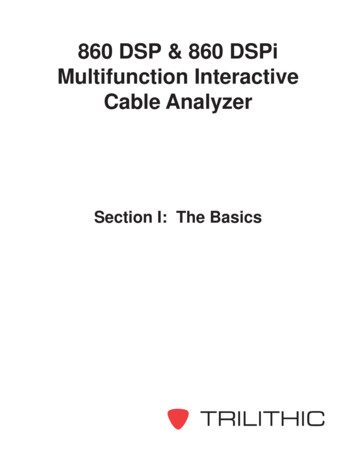
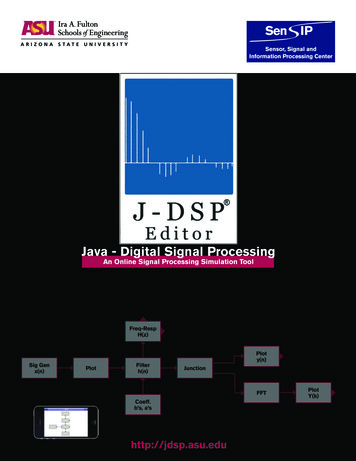
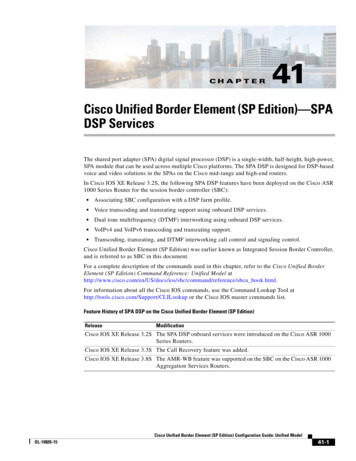


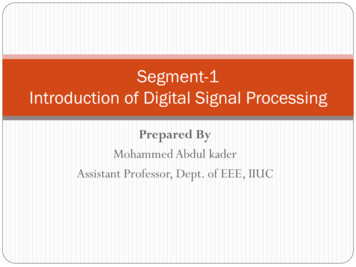



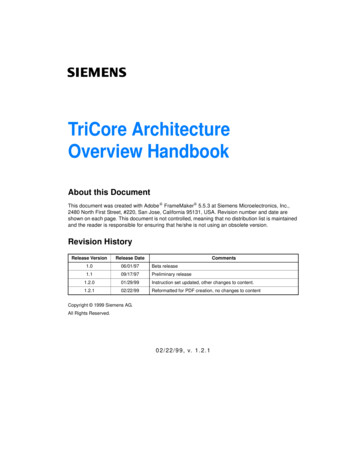
![Tuning Fork Crack [32 64bit]](/img/53/ansritbgmbzmsmdwl2vu-06-e1e5783f74e84991333bbca449aa905d-file.jpg)
